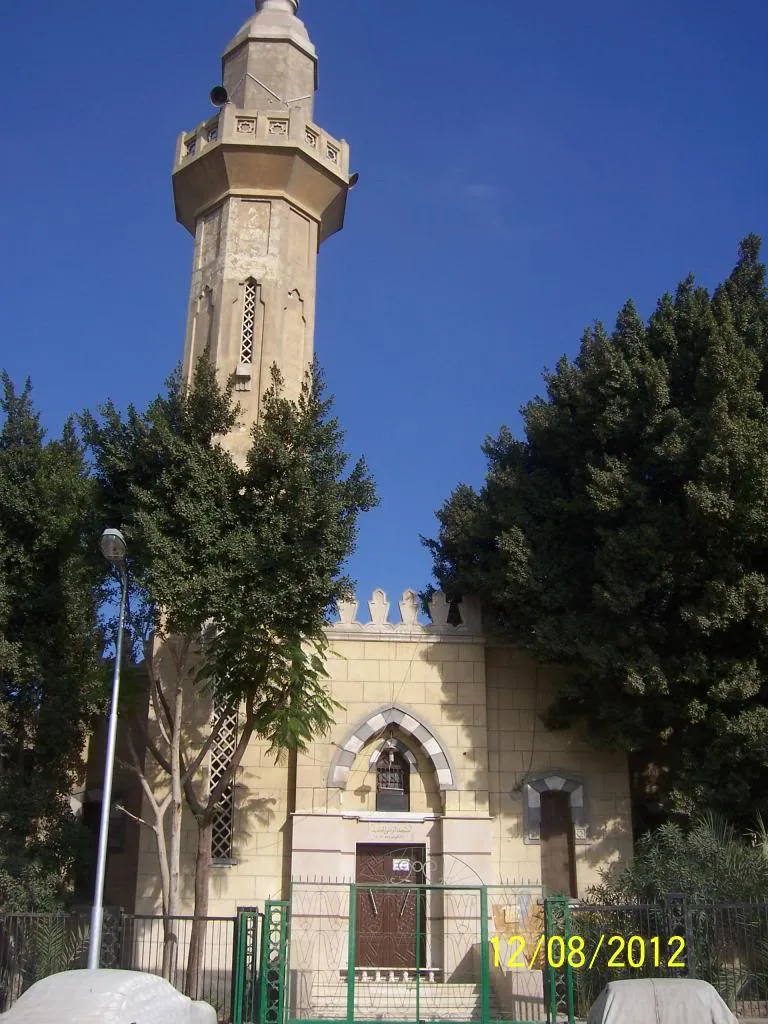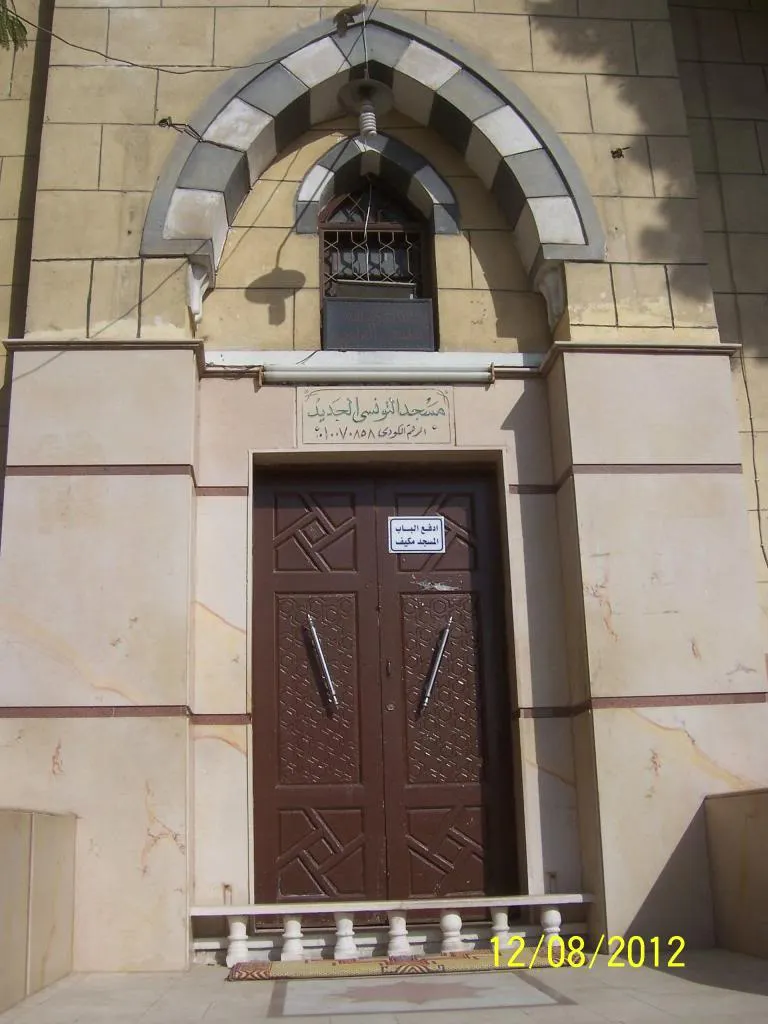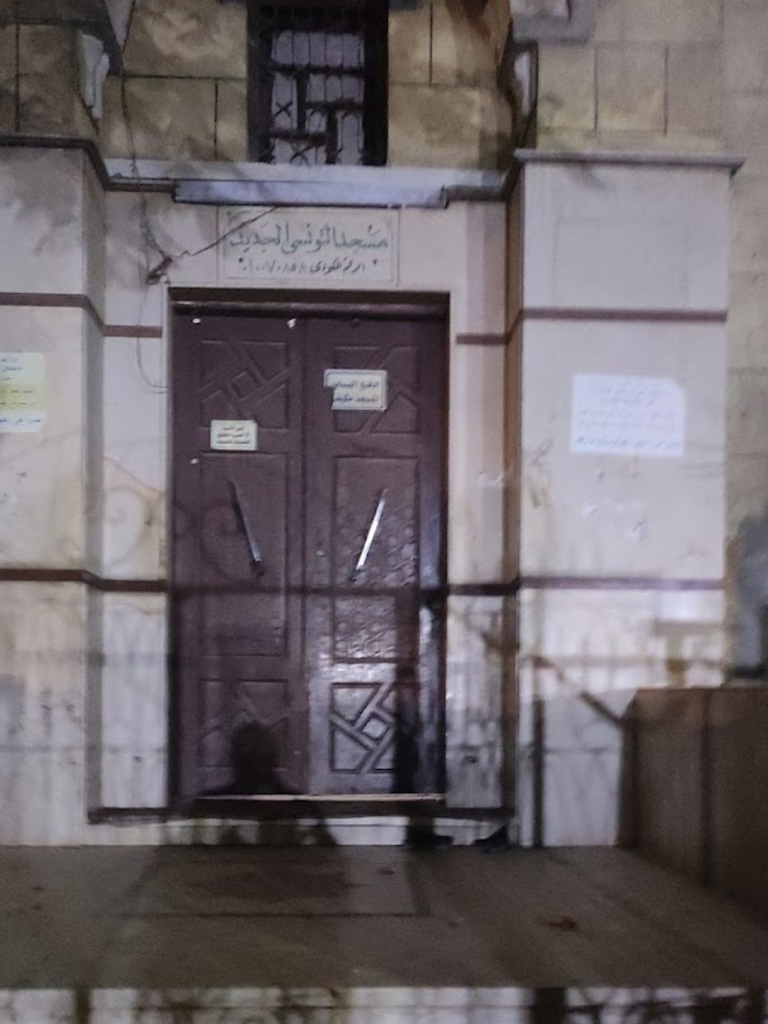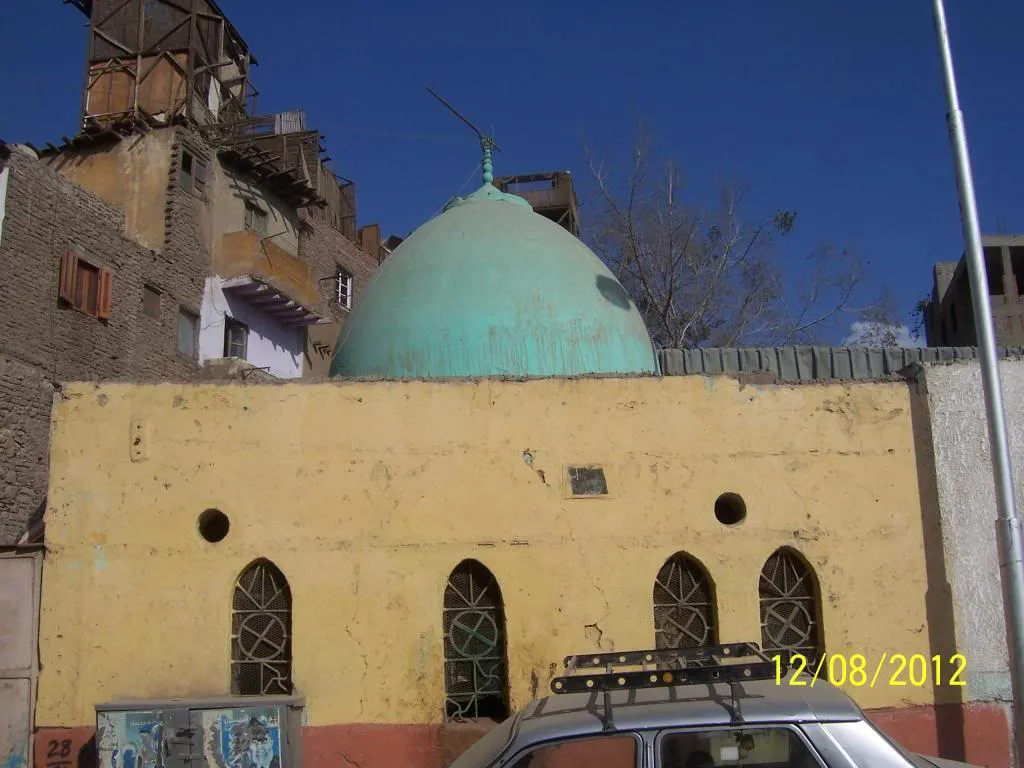Bio: Sh. Abul Mawahib al-Shadhili | الشيخ أبو المواهب الشاذلي
Sh. Abul Mawahib al-Shadhili
الشيخ أبو عبد الله محمد أبو المواهب التونسي الشاذلي الوفائيd. 881 H. (? after 850) in Cairo
﷽
English
From Brill Encyclopedia
Abū l-Mawāhib al-Shādhilī, Muḥammad b. Zaghdān (820–82/1417–77), was an Egyptian author and Ṣūfī. Born in Tunis, he studied the Malikī school of Islamic law and Islamic sciences at Jāmiʿ al-Zaytūna, the celebrated mosque-university in Tunis. At the age of twenty-two, he settled in Cairo in the vicinity of al-Azhar, where he studied ḥadīth with Ibn Ḥajar al-ʿAsqalānī (773–852/1372–1449) and adopted Ṣūfism as a shaykh of the Wafāʾī lineage, which is the Cairene branch of the Shādhiliyya order (ṭarīqa). This ṭarīqa has as eponymous master the Moroccan Abū l-Ḥasan al-Shādhilī …
He is the shaykh of two groups, the springhead of two secrets, and the qutb attached to the Divine Essence. He is the possessor of spiritual allusions and glad tidings, our master Abu Hamid, our liege Abu ‘Abdullah Muhammad Abu’l-Mawahib al-Tunusi al-Wafa’i, may his lofty secret be sanctified [1].
He was — may Allah Most High have mercy on him — from the graceful, illustrious members of the spiritually elite, and of the active doers of good among scholars deeply rooted in knowledge. He was — may Allah show mercy to him — gifted the expressiveness of our master ‘Ali Abu’l-Wafa’, who penned divinely inspired lyrical verses [muwashshahat] and books, which were of striking quality. Among his exquisite writings is al-Qanun on the sciences of the spiritual path, the full title of which is Qawanin Hikam al-Ishraq fi Qawa’id ‘ala al-Itlaq [2]. It is a unique work of its kind, and attests to the author’s perfected spiritual experience [dhawq]. He also penned a commentary on Al-Hikam al-´Ata’iyya, wherein he unlocked recondite aspects of its hidden treasures, and an anthology of poetry based on the figurative language of the Sufis.
He — may Allah have mercy on him — lived near the Azhar Mosque. He would hold a solitary retreat by the minaret of its roof, which had been built for him by Sultan al-Ghuri. A state of intoxication would be prevalent in him, whereupon he would come down from his retreat, sauntering and leaning on a side of the Azhar Mosque.
His poems and sayings were sung during mawlids, gatherings and in mosques in the presence of scholars and pious people, who would sway from the sheer delight of their sweetness.
He — may Allah show mercy to him — often dreamt of the Messenger of Allah ﷺ . He said: ‘The Messenger of Allah ﷺ donned me in the mantle of Sufism.’ He also said: ‘I saw the Messenger of Allah ﷺ in a dream, and he said to me: “Say when retiring to sleep,
‘I seek refuge in Allah from the accursed Shaytan’
أعذو بالله من الشيطان الرجيم
five times;
‘In the Name of Allah, the All-Merciful, the Most Merciful’
بسم الله الرحمن الرحيم
five times;
‘O Allah, by the right of Muhammad, show me the face of Muhammad now and in the Hereafter.’
اللَّهُمَّ بِحَقِّ مُحَمَّدٍ أرَنِي وَجْهَ مُحَمَّدٍ خَالاً وَمآلاً
If you say that when you go to sleep, I will come to you, without staying away from you in the least.” What a fine method this is, bearing a splendid meaning for the one who confirms its truthfulness.’
This formula is one of the most potent supplications for seeing the Prophet A in a dream, yet among the lightest on the tongue, as it does not take long [to make]. Many people, including myself, have put it to the test. I have passed it on to some of my brothers in God — may Allah multiply their number and increase them in their spiritual sustentation — who have tried it according to the said manner and beheld the Prophet ﷺ.
Personally, I added the requirement of being in a state of minor ritual purity [wudu’], and reciting it on the night of Jumu`a (i.e. on Thursday night.) This is because of the virtues transmitted about [this night]. I beheld him ﷺ in the last third of Ramadan, and by God, I saw him put the full moon to shame in beauty. He was wearing a silk dress and lying down on his back. His hair was loose and his middle incisors shone brightly, enveloped by such a powerful light that it almost blinded one. When I saw him, I was engaged in reciting my daily litany [wird], whereupon he summoned me, saying: `Draw close to me.’ When I did, he gave me glad tidings. {That is Allah’s favour which He confers on whoever He wills. Allah is endowed with the immense favour’} [Sura al-Hadid: 21]. O Allah, delight us and our brothers by gazing at Your Face and at his noble face ﷺ, and perpetuate for us our contemplation thereof, 0 Most Merciful, 0 Compassionate.
Sayyidi Abu’l-Mawahib said: ‘I saw the Messenger of Allah who said: `You will intercede on behalf of one hundred thousand people.’ I asked, ‘What makes me deserve it, 0 Messenger of Allah’, so he replied: ‘Because you have gifted me the reward of your prayers on me.’
He would say: ‘One day I rushed through my sending of blessings on him ﷺ which numbered one thousand, in order to complete my regular daily litany [wird], so he ﷺ said to me: ‘Do you not know that haste is from the Shaytan?’ He followed that up by saying: ‘Say, “O Allah, send blessings upon our master Muhammad and upon the family of our master Muhammad” in a slow and measured rhythm.’
He would also say: ‘I saw the Messenger of Allah ﷺ and he said to me: “Your guide Abu Sa’id al-Safuri sends the complete salutation of blessings upon me, and makes abundant recitation of it. Tell him then that when he seals his sending of blessings, he should [also] praise Allah, Mighty and Majestic.’ The “complete salutation of blessings” referred to here is the prayer on the Prophet during the last tashahhud of the prayer. It has virtues, prerogatives and secrets, and has had numerous ahadith come done concerning it through continuous multiple transmissions. We have mentioned the specifities of this prayer and what pertains to its merits in our book Tuhfat al-Salawat, whose complete title is Mi’raj al-Wusul ila Nafahat al-Rasul ﷺ. If you so wish, you could take a look at it and find what is going to delight you, Allah willing.
Sayyidi Abu’l-Mawahib passed away sometime after AH 850, and was buried by the graveyards of the Shadhili masters in the great Qarafa Cemetery [in Cairo], inside a shrine made especially for him and surmounted by a large dome. Every year, a celebration is held in his honour, attended by members of the Shadhili Order, who bring its nights alive by remembrance of Allah and the recitation of the Qur’an. O Allah, nourish us through his spiritual sustentation, amin.
Footnotes:
[1] He is known as Ibn Zaghdan. See his translation in Isma’il Basha al-Baghdadi’s Hadiyyat sl-‘Arifin (6/209) and Idah al-Maknun (4/244), where it is mentioned that he died in All 881.
[2] In Idah al-Maknun Isma`il Basha al-Baghdadi gives its title as Qawanin Hikam al-‘Ishraq ila Kaffat al-Sufiyya fi Jami’ al-‘Afaq.
عربي
2. From Kuhin: Tabaqat al-Shadhiliyya: View book | Download | Chapter [36] (see below)
(…- بعد 850)
شيخ الفريقين، ومنبع السرين، القطب الذاتي، صاحب الإشارات والبشارات، مولانا أبو حامد سيدنا أبو عبد الله محمد أبو المواهب التونسي الشاذلي الوفائي قدس سره العالي.
كان رحمه الله تعالى من الظرفاء الأجلاء الأخيار، والعلماء الراسخين الأبرار، أُعطي رحمه الله ناطقة مولانا علي أبي الوفاء، وعمل الموشحات الربانية، وألف الكتب الفائقة اللدنية، ومن محاسن تآليفه، وفضائل تصانيفه كتاب «القانون» في علوم الطائفة المسمى بـ «قوانين حكم الإشراق في قواعد الصوفية على الإطلاق»، وهو كتاب بديع لم يؤلف مثله، يشهد لصاحبه بالذوق الكامل، وله شرح على «الحكم العطائية»، أحلَّ غامضات أسرارها الخفية، وله دواوين شعر منظوم على لسان القوم.
وكان رحمه الله تعالى مقيمًا بالقرب من الجامع الأزهر، وكان له خلوةٌ في سطحه موضع المنارة التي عملها السلطان الغوري.
وكان يغلب عليه سكرُ الحال، فينزل يتمشى، ويتمايل في الجامع الأزهر.
وكان شعره وكلامه يُنشد في الموالد والاجتماعات والمساجد على رءوس العلماء والصالحين، فيتمايلون طربًا من حلاوته.
وكان رحمه الله كثير المرائي لرسول الله صلى الله عليه وسلم. قال رحمه الله: ألبسني رسول الله صلى الله عليه وسلم خرقة التصوف.
وقال رحمه الله: رأيتُ رسول الله صلى الله عليه وسلم في المنام، فقال لي: قل عند النوم: أعوذ بالله من الشيطان الرجيم خمسًا، بسم الله الرحمن الرحيم خمسًا، ثم قل: اللهم، بحق محمد أرني وجه محمد حالًا ومآلًا، فإذا قلتها عند النوم فإني آتي إليك، ولا أتخلف عنك أصلاً، ثم قال: وما أحسنها من رقية، ومن معنى لمن آمن به.
أقول: وهذه الرقية من أعظم الدعوات لرؤية النبي صلى الله عليه وسلم في المنام، وأخفها؛ إذ لا تحتاج إلى استغراق في الوقت، وقد جربها أناسٌ كثيرون وجربتها، وأخبرت بها بعض إخواننا في الله، قوى الله عددهم، وزاد مددهم، فاستعملوها بهذه الكيفية، فرأوا النبي صلى الله عليه وسلم، وقد زدت عليها الوضوء، وكون التلاوة تكون ليلة الجمعة؛ لما ورد في ذلك من الفضائل، فرأيته صلى الله عليه وسلم في شهر رمضان في العشرة الأخيرة، والله الذي لا إله إلا هو رأيته يُخجلُ البدرَ في حسنه، لابسًا ثوبًا من حرير، مُستلقيًا على ظهره، مسترسلَ الشعر، براق الثنايا، له نورٌ عظيم يكاد يخطَفُ بالأبصار، وكنتُ مشتغلًا بقراءة وردي، فناداني صلى الله عليه وسلم: ادنُ مني. فدنوت منه صلى الله عليه وسلم، فبشَّرني ببشارات حسنة. ﴿ذَلِكَ فَضْلُ اللهِ يُؤْتِيهِ مَنْ يَشَاءُ وَاللهُ ذُو الفَضْلِ العَظِيمِ﴾ [الحديد: 21]، اللهم متعنا وإخواننا بالنظر إلى وجهك ووجهِه الكريم، وأدم علينا مُشاهدته يا رحمن يا رحيم.
قال سيدي أبو المواهب رضى الله عنه: رأيت رسول الله صلى الله عليه وسلم، فقال لي: أنت تشفع لمئة ألف. قلت له: بم استوجبت ذلك يا رسول الله؟ قال: بإعطائك لي ثوابَ الصلاة عليَّ.
وكان رضى الله عنه يقول: استعجلتُ مرة في صلاتي عليه صلى الله عليه وسلم؛ لأُكمل وردي، وكان ألفًا، فقال لي صلى الله عليه وسلم: أما علمت أنَّ العجلة من الشيطان، ثم قال: قل: اللهم صلِّ على سيدنا محمد، وعلى آل سيدنا محمد، بتمهُّلٍ وترتيلٍ.
وكان يقول رضى الله عنه: رأيتُ رسول الله صلى الله عليه وسلم، فقال لي: إن شيخَك أبا سعيد الصفوري يصلي عليَّ الصلاة التامة، ويكثرُ منها، فقل له: إذا ختم الصلاة أن يحمد الله عزَّ وجلَّ.
والصلاة التامة هذه هي صلاةُ التَّشهُّدِ الأخير، ولها فضائلُ، وخواص، وأسرار، وقد وردت بها أحاديث كثيرةٌ متواترةٌ، وقد ذكرنا خواصَّها، وما يتعلق بفضائلها في كتابنا «تحفة الصلوات» المسمى بـ «معارج الوصول إلى نفحات الرسول»، فإن أردت فراجعه تر ما يسرك إن شاء الله.
تُوفي سيدي أبو المواهب رضى الله عنه بعد الثمان مئة وخمسين، ودُفن بمدافن السادات الشاذلية بالقرافة الكبرى، بمقام أُعدَّ له، وعليه قبَّةٌ كبيرة، وله مولد يعمل كل عام، تحضره إخوان الشاذلية، ويحيون لياليه بالذكر والتلاوة وقراءة القرآن. اللهم أمدَّنا بمدده آمين.
([1]) محمد أبو المواهب التونسي الوفائي الشاذلي، أبو عبد الله كان له شعر في التصوف، وكان مقيمًا بالقرب من الجامع الأزهر، توفي بعد الثمانمئة والخمسين من الهجرة، وفي «إيضاح المكنون» توفي سنة 881هـ. [«هدية العارفين» (6/209)].
Photos
Map
Writings
أبو المواهب الشاذلي : كتاب قوانين حكم الإشق
Same style as al-Hikam. Benefits the murshids and the Awliya
Related Posts
None found



